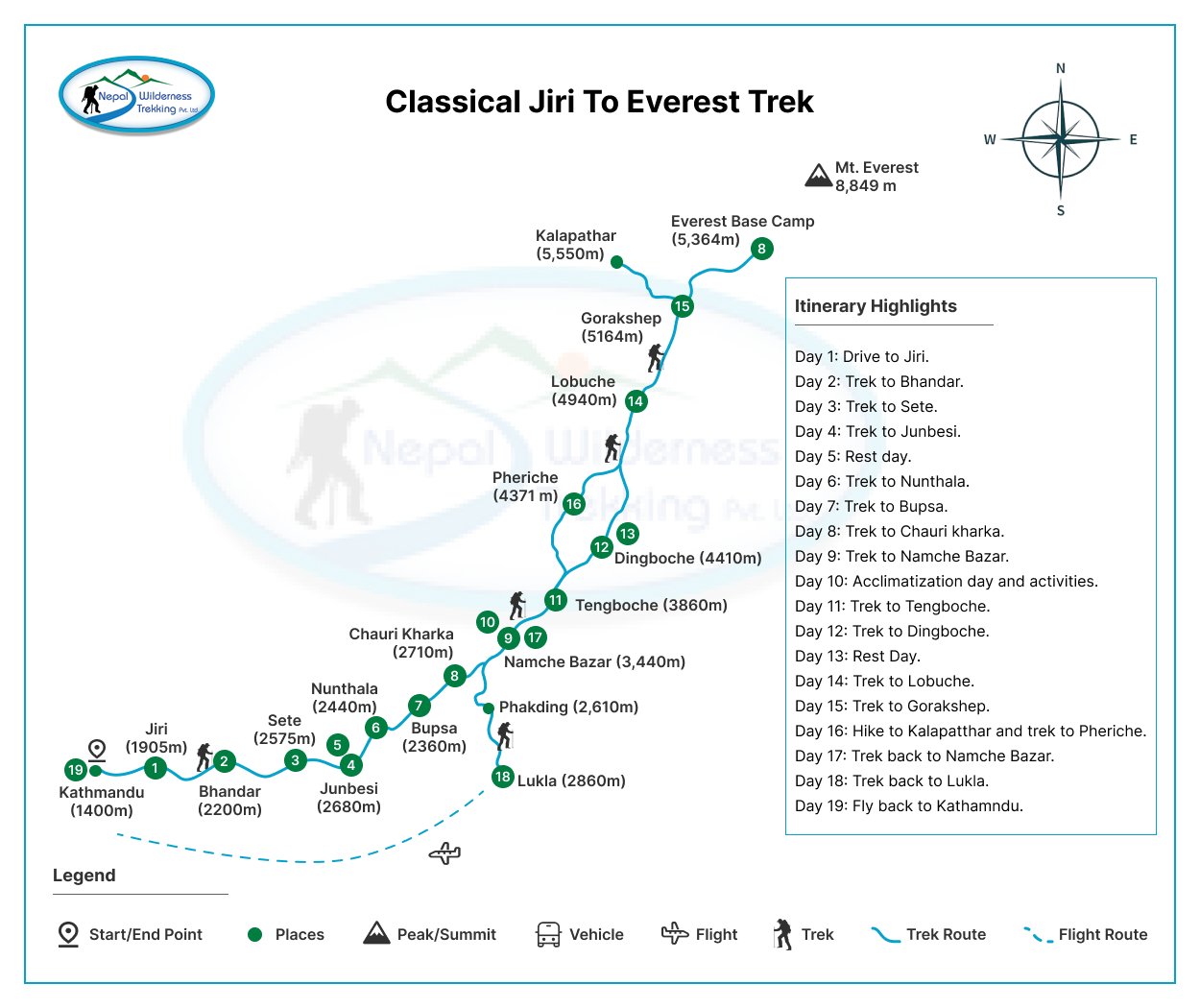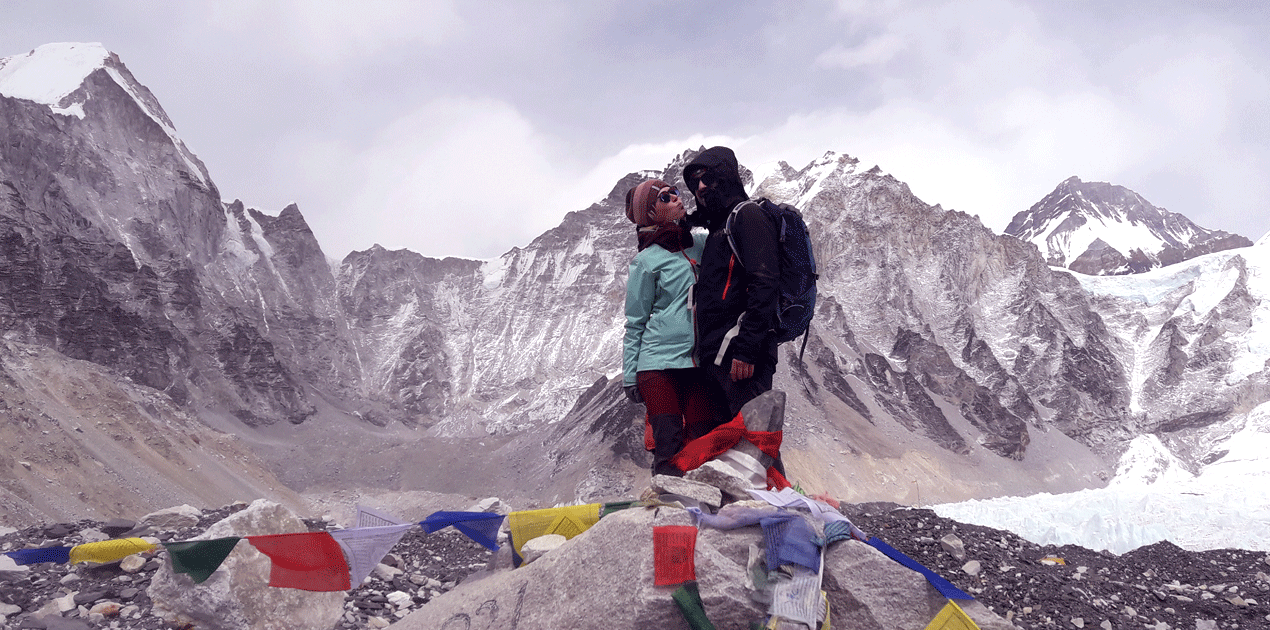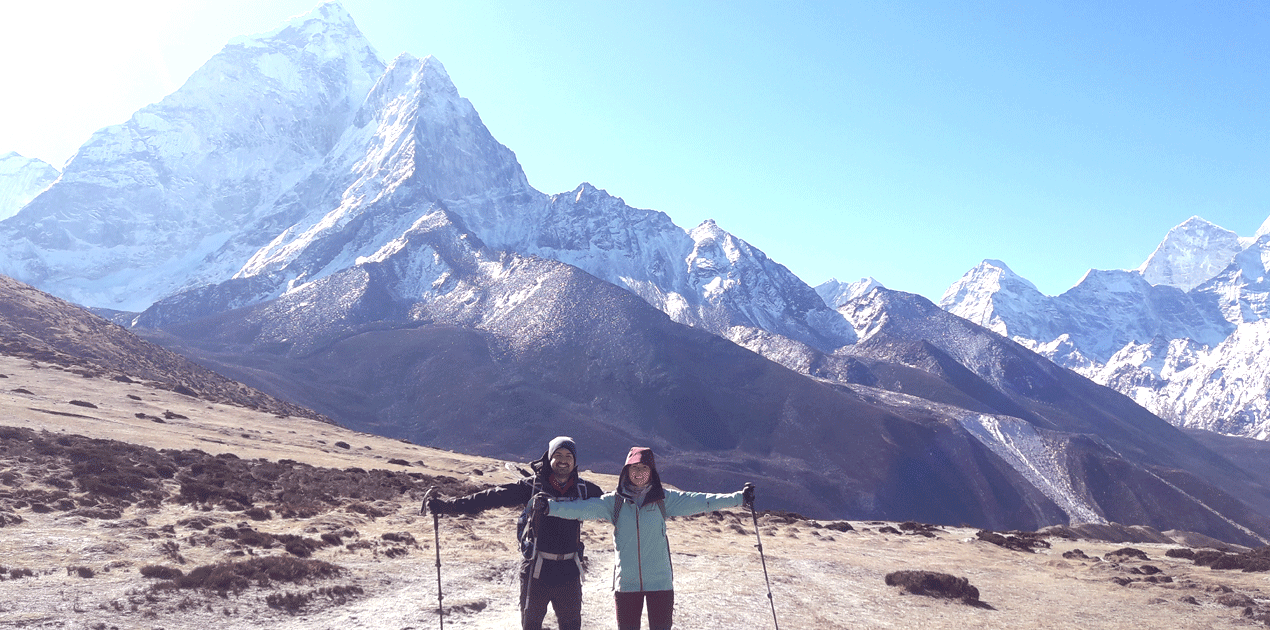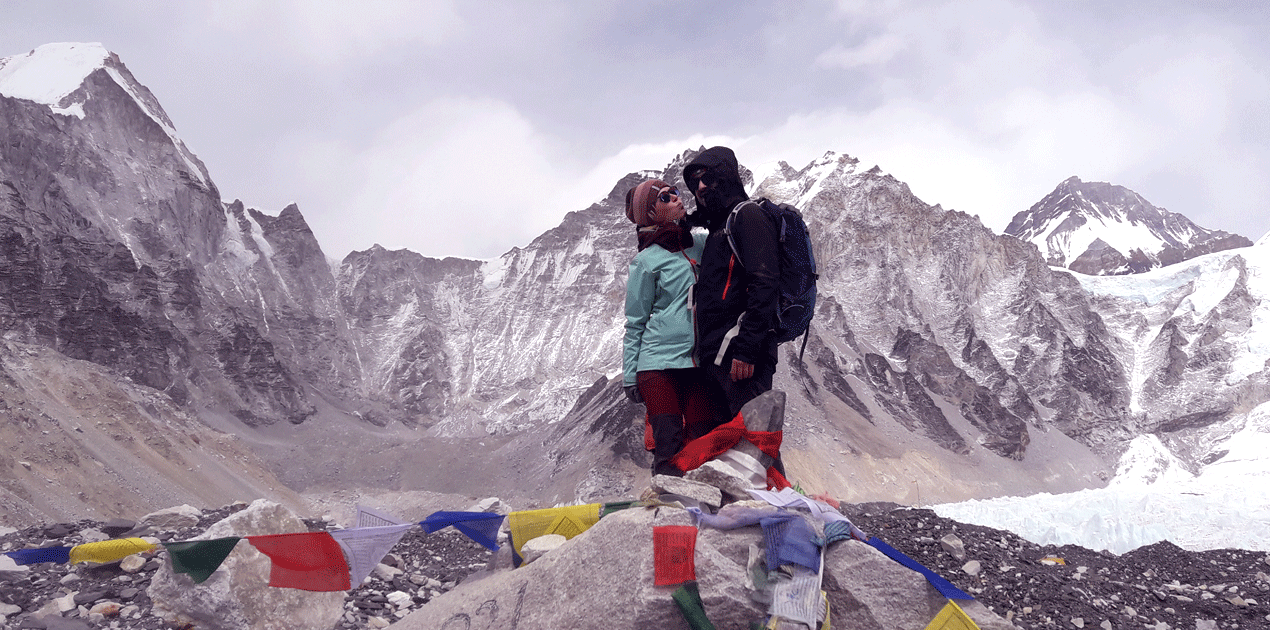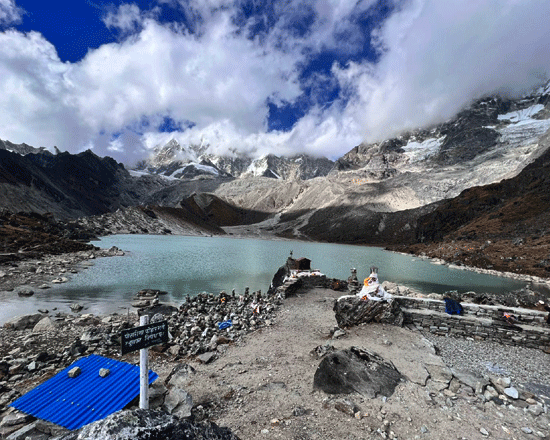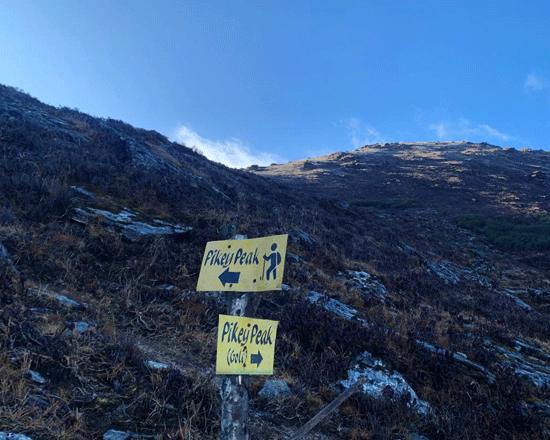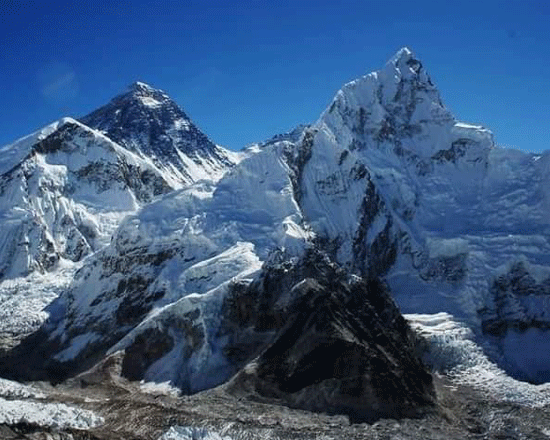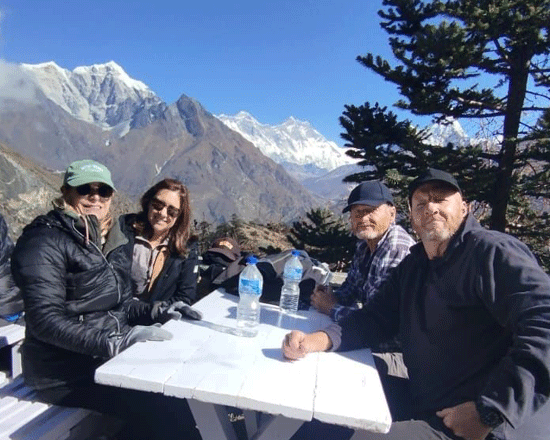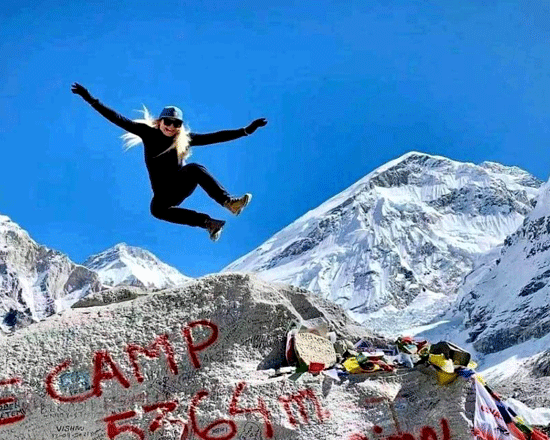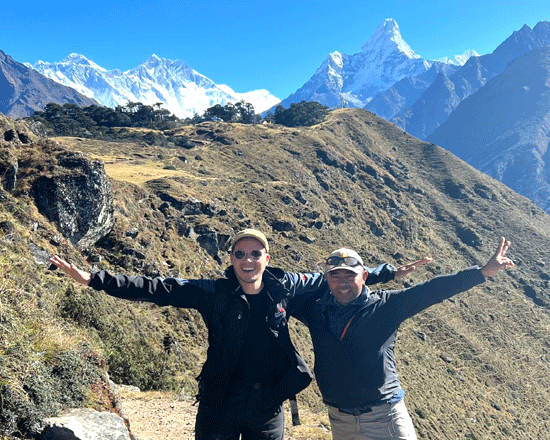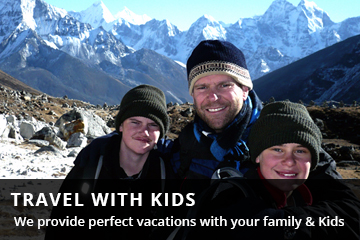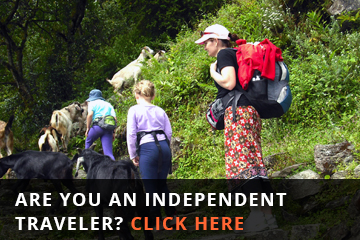Classical Jiri to Everest Trek
Classical Jiri to Everest Trek
Everest RegionTrip Facts
Since the terrain can be hard and the days long, hikers on these treks should be in good physical condition and have some previous mountain walking experience. Steep climbing may be involved, although it is never necessary to use ropes. Treks at this level can he arranged for periods of 16 to 21 days. Typically, a gradual ascent through a green river valley will lead you up to a number of high passes, where you will reach the altitude of 5416m. Often times, you will get a close insight into the Tibetan culture. Participants should expect to trek above 5416m/17872ft.
100%
Overview
Classical Jiri to Everest Base Camp Trek Package Itinerary:
The Classical Jiri to Everest base camp Trek retraces the footsteps of the early Everest expeditions before the construction of Lukla Airport. The picturesque town of Jiri is nestled in the foothills of the Himalayas. This trek leads you through traditional Sherpa villages, enchanting forests, and challenging mountain passes.
Starting the trail from classical Jiri to Everest Base Camp 5,364 meters (17,598 ft)is a dream for many trekkers, as it follows the path used by legendary Hillary and Tenzin Norgay during their early expeditions. Nepal, a captivating land, attracts countless travelers from around the world. The Classical Jiri to Everest route Trek is a 19-day adventure holding the magnifying Sherpa villages. There are short treks to EBC and 12 days to do both-way flights.
The Classical Jiri trek is regarded as one of the most rewarding journeys in this region. It is a travel experience that you may want to share with future generations. Undoubtedly, the trail from Jiri to Namche up and surrounding Sagarmatha National Park is a true delight. Along the way to the foothills of the world’s highest peak, you will witness numerous majestic mountains, including Everest, Lhotse, Nuptse, Makalu, Cho Oyu, and Ama Dablam.
History of Jirri Valley
Jiri, often referred to as the “Gateway to Everest,” is a significant town in Nepal’s Dolakha District. This small but historically important town has played a crucial role in Nepal’s trekking industry, particularly before the construction of the Lukla Airport.
History of Jiri
Origins and Development
- Jiri was developed with Swiss assistance in the 1930s as part of a project to introduce modern dairy farming in Nepal.
- The town’s name is derived from the indigenous Jirel community, one of the ethnic groups residing in the area.
Role in Trekking:
-
Before building the Lukla Airport in the 1960s, trekkers began their journey to Everest Base Camp from Jiri. This route added about a week of trekking through the Solu-Khumbu region, allowing for gradual acclimatization.The classic trekking route from Jiri to Everest is known for its cultural richness and diversity, passing through traditional Sherpa villages and beautiful landscapes.
Modern Developments:
- Though the construction of the Lukla Airport has reduced Jiri’s prominence as a trekking hub, it remains a vital town for those who prefer the traditional trekking route.
- The town has modern amenities, including guesthouses, restaurants, and shops, catering to trekkers and locals alike.
Important Places in Jiri
Jiri Bazaar:
- The central marketplace of Jiri, where you can experience the local culture, buy traditional crafts, and enjoy local cuisine.
- During weekly market days, farmers and traders from surrounding areas come to sell their goods.
Jiri Technical School:
- Established with Swiss assistance, the Jiri Technical School provides vocational training in various fields, including agriculture, mechanics, and health sciences.
- The school has been instrumental in providing education and skills to the local youth, contributing to the area’s socio-economic development.
Cheese Factory:
- One of the legacies of Swiss assistance is the cheese factory in Jiri, which produces high-quality dairy products.
- The factory is a popular stop for trekkers and visitors, offering a taste of locally produced cheese and other dairy items.
Jiri Hospital:
-
- Established with Swiss help, the Jiri Hospital serves as a crucial healthcare facility for the region, providing medical services to locals and trekkers.
- The hospital has played a significant role in improving the health standards of the local population.
The Classical Jiri to Everest base camp crosses villages such as the beautiful towns of Jiri, Bhandar, Sete, Junbesi, Nuntala, Khari Khola, and Puiyan. After reaching the village of Puiyan, you will join the standard Everest region Trek route at Phakding. Further ahead, you will trek to Namche Bazaar, the vibrant heart of Khumbu.
Side Trip During the Trek
Namche Bazaar, acclimatization day, bustling with Sherpa culture, is one of the busiest towns along the Everest Base Camp route. The area is adorned with teahouses, local markets, trekking shops, restaurants, coffee shops, and cafes. Before ascending to higher elevations, you will enjoy a rest day at Namche Bazaar to acclimate. During this day, you will hike to the Everest View Hotel, the world’s highest luxury hotel, to marvel at the breathtaking scenery.
Acclimatization day
- As you ascend higher into the Everest region, the air pressure and oxygen levels decrease, leading to lower oxygen saturation in your blood. This can cause altitude-related illnesses such as Acute Mountain Sickness (AMS), High Altitude Pulmonary Edema (HAPE), and High Altitude Cerebral Edema (HACE).
- Acclimatization allows your body time to adjust to the reduced oxygen levels, helping to minimize the risk of these illnesses.
- Acclimatization days provide trekkers and guides to monitor any symptoms of altitude sickness that may develop, such as headache, nausea, dizziness, and fatigue. Additionally, to prevent them from such problems arising which can cause severe conditions.
- Acclimatization improves your physical performance at higher altitudes and reduces the rush and stress of gaining altitude quickly.
Journey to Everest base camp
To reach Base Camp via the classic Jiri route, you will pass through high settlements like Dingboche and Lobuche. The journey to the base camp is undoubtedly demanding, and rewarding. On clear days, you will be greeted by the magnificent sight of Everest and its neighboring peaks.
The view from the summit of Kala Patthar, situated at 5,545 meters, is simply awe-inspiring. This popular viewpoint offers a mesmerizing panorama of the sunrise and the Himalayas. Afterward, you will descend back to Namche Bazaar and conclude the trek by taking a flight from Lukla to Kathmandu, marking the end of your unforgettable Classic Everest route Trek.
Classical Jiri to Everest base camp highlights
- Celebrate reaching the base of Mount Everest, the highest mountain in the world.
- Located at 5,545 meters above sea level, Kala Patthar provides a spectacular view of Everest.
- Experience the spiritual aspect of Khumbu by visiting the centuries-old monastery of Tengboche.
- Experience the world’s highest luxury hotel, the Everest View Hotel.
- Discover the beautiful Sherpa town of Namche Bazaar.
- Take part in the natural, cultural, and spiritual trek.
- Enjoy a breathtaking view of Mount Everest, Thamserku, Ama Dablam, Cho Oyu, Nuptse, Makalu, and Lhotse.
Classical Jiri to Everest Trek preparation
To undertake the Classical Jiri to Everest trek itinerary, trekkers need to be physically fit. It is recommended to run for at least an hour a day for 15 to 20 days or more than months depending on your fitness level before the trek. This helps to build the individual’s hiking stamina. This preparation helps in acclimatizing to the high altitudes and ensures you are ready for the demanding terrain of the trek, including the challenging ascent of the Everest Base Camp at 5,364 meters (17,598 ft).
What’s crucial is a willingness to prepare physically and mentally, and to respect the demands of the environment. Proper acclimatization ensures trekkers can fully enjoy the journey, absorbing the breathtaking landscapes and immersing themselves in the local culture. Ensure that, you bring the recommended trekking equipment list. Remember, quality trekking equipment can make your trip enjoyable, while a poor one can make it miserable.
Kathmandu to Jiri Distance
By road, the distance from Kathmandu to Jiri is approximately 188 kilometers (117 miles). The journey on a local bus typically takes around 7 to 9 hours, depending on the traffic and condition of the roads.
Once you arrive in Jiri, the starting point for the Classical Jiri is to Everest Base Camp Trek. Subsequently, the trek from Jiri to Lukla covers a distance of roughly 170 kilometers (105 miles) on foot. It’s worth noting that undertaking the Classical Jiri to Base Camp is a lengthier and more challenging alternative compared to the standard route from Lukla. Nevertheless, it offers a distinctive and less crowded trekking experience, allowing you to explore traditional Sherpa villages and relish breathtaking landscapes.
Best time to Embark on the Classic Jiri Trek
For the Classical Jiri to Everest Base Camp trek, the best times to embark on this adventure are during the spring season, specifically from March to June. These months offer trekkers favorable weather conditions and excellent visibility, providing the opportunity to fully immerse themselves in the awe-inspiring natural beauty of the region. With blooming flowers and verdant greenery, the landscape becomes a feast for the senses, enhancing the overall appeal of the trek. Furthermore, during this time, the trails are relatively less crowded compared to the peak trekking season, ensuring a more tranquil and peaceful experience for adventurers.
Alternatively, the early months of September to December also present an optimal window for the Classical Jiri to Everest Base Camp trek. This period marks the autumn season when the weather is stable, and the skies are generally clear. The days offer mild temperatures, perfect for comfortable trekking. Autumn unveils breathtaking views of the surrounding mountains, as the exceptionally clear skies allow trekkers uninterrupted panoramas of the majestic Himalayas. Similar to the spring season, embarking on the Jiri to Everest Base Camp trek during autumn offers the advantage of a peaceful journey, with fewer fellow trekkers on the trails.
Why to choose Nepal Wilderness Company?
Explore the majestic beauty of the Classical Jiri route with the expertise of the Nepal Wilderness trekking Team guiding your trekking adventure. Our seasoned guides will lead you through this iconic trail, renowned for its breathtaking landscapes and cultural richness.
It leads the journey through quaint villages, lush forests, and serene valleys, offering a glimpse into the traditional way of life in the Himalayas. With our expert guidance, you’ll uncover hidden gems along the route, immersing yourself in the charm of local culture and hospitality.
Experience the thrill of trekking in the heart of the Himalayas, as our knowledgeable guides ensure your safety and comfort throughout the expedition. Whether you’re a seasoned trekker or embarking on your first adventure, our team is dedicated to providing you with an unforgettable experience on the Classical Jiri to Everest base camp route.
Note
Join us for an unforgettable trekking experience that combines the thrill of adventure with the tranquility of nature. All under the expert guidance of the Nepal Wilderness Trekking team at a competitive package.
Some more info on the Nepal treks
- Lukla to Namche Bazaar Distance
- Namche Bazaar Trek
- Classic Mardi Himal Poon Hill Trek
- Classic Annapurna Circuit Trek
- Classic Poon Hill Round Trek
Detail Itinerary
- Day 1: Drive from Kathmandu to Jiri (1,905m) - The journey from Kathmandu to Jiri by road takes approximately 7 to 9 hours, covering a distance of around 188 kilometers.
- Day 2: Trek from Jiri to Bhandar (2,200m) - This trek involves walking for about 6 to 7 hours, covering a distance of approximately 15 kilometers with an elevation gain of 295 meters.
- Day 3: Trek from Bhandar to Sete (2,575m) - The trek from Bhandar to Sete takes around 6 to 7 hours, covering a distance of approximately 8 kilometers with an elevation gain of 375 meters.
- Day 4: Trek from Sete to Junbesi (2,680m) - This trek lasts for about 6 to 7 hours, covering a distance of approximately 11 kilometers with an elevation gain of 105 meters.
- Day 5: Acclimatization day at Junbesi - Rest day for acclimatization.
- Day 6: Trek from Junbesi to Nunthala (2,440m) - The trek from Junbesi to Nunthala takes around 5 to 6 hours, covering a distance of approximately 13 kilometers with an elevation loss of 240 meters.
- Day 7: Trek from Nunthala to Bupsa (2,360m) - This trek involves walking for about 5 to 6 hours, covering a distance of approximately 12 kilometers with an elevation loss of 80 meters.
- Day 8: Trek from Bupsa to Chaurikharka (2,710m) - The trek from Bupsa to Chaurikharka takes around 6 to 7 hours, covering a distance of approximately 11 kilometers with an elevation gain of 350 meters.
- Day 9: Trek from Chaurikharka to Namche Bazaar (3,440m) - This trek lasts for about 5 to 6 hours, covering a distance of approximately 9 kilometers with an elevation gain of 730 meters.
- Day 10: Acclimatization day at Namche Bazaar - Rest day for acclimatization.
- Day 11: Trek from Namche Bazaar to Tengboche (3,870m) - The trek from Namche Bazaar to Tengboche takes around 5 to 6 hours, covering a distance of approximately 10 kilometers with an elevation gain of 430 meters.
- Day 12: Trek from Tengboche to Dingboche (4,360m) - This trek involves walking for about 5 to 6 hours, covering a distance of approximately 11 kilometers with an elevation gain of 490 meters.
- Day 13: Acclimatization day at Dingboche - Rest day for acclimatization.
- Day 14: Trek from Dingboche to Lobuche (4,940m) - The trek from Dingboche to Lobuche takes around 5 to 6 hours, covering a distance of approximately 11 kilometers with an elevation gain of 580 meters.
- Day 15: Trek from Lobuche to Gorak Shep (5,164m) and hike to Everest Base Camp (5,364m) - This trek involves walking for about 7 to 8 hours, covering a distance of approximately 15 kilometers with an elevation gain of 420 meters.
- Day 16: Hike to Kala Patthar (5,545m) and trek back to Pheriche (4,240m) - The hike to Kala Patthar and the trek back to Pheriche takes around 7 to 8 hours, covering a distance of approximately 15 kilometers with an elevation loss of 1,305 meters.
- Day 17: Trek from Pheriche to Namche Bazaar - This trek lasts for about 6 to 7 hours, covering a distance of approximately 20 kilometers with an elevation loss of 1,200 meters.
- Day 18: Trek from Namche Bazaar to Lukla - The trek from Namche Bazaar to Lukla takes around 6 to 7 hours, covering a distance of approximately 19 kilometers with an elevation loss of 1,080 meters.
- Day 19: Fly from Lukla to Kathmandu - Flight from Lukla to Kathmandu.
Cost Included
- Kathmandu to Jiri by Bus
- Domestic flight tickets back from Lukla to Kathmandu
- Italian, Chinese, Nepali, Indian, and other European foods are available three times a day (breakfast, lunch, and dinner).
- Accommodation in tea houses according to the itinerary
- Kitbag for storing your belongings
- Sleeping bag for a comfortable night's sleep on a trek in minus-25 degrees
- Everest National Park Entrance Trekking Permit
- Khumbu Pasang Lhamu Rural Municipality Entrance Permit
- Experienced English-speaking trekking guide licensed by the government, familiar with the area.
- One porter for every two to three participants. (Note: An additional cost applies for solo clients requiring a porter.)
- Guide, and Porter meals, accommodation, salary, and insurance
- Necessary paper works, all government, and local taxes
- A certificate of appreciation from Nepal wilderness trekking after a successful trek
Cost Excluded
- Airfare for international flights
- Upon arrival at Tribhuwan International Airport, Nepal entry visa fees vary by duration (15 days - $25-30, 30 days
- Accommodations and meals in Kathmandu before and after our journey
- Personal equipment for high and cold temperatures
- Emergency high-altitude rescue and evacuation are covered by travel insurance
- All beverages, Soft and coffee table drinks such as coke, beer,
- Drinking water/mineral water, Dessert, etc. Hot shower, laundry
- Tip for guide and porter
- Excluded are all costs and expenses not listed under "cost includes"
- Inclusion of costs or delays beyond the control of the management, such as landslides, weather conditions, itinerary modifications due to safety concerns, illness, changes in government policies, strikes, etc.
Trip Map
